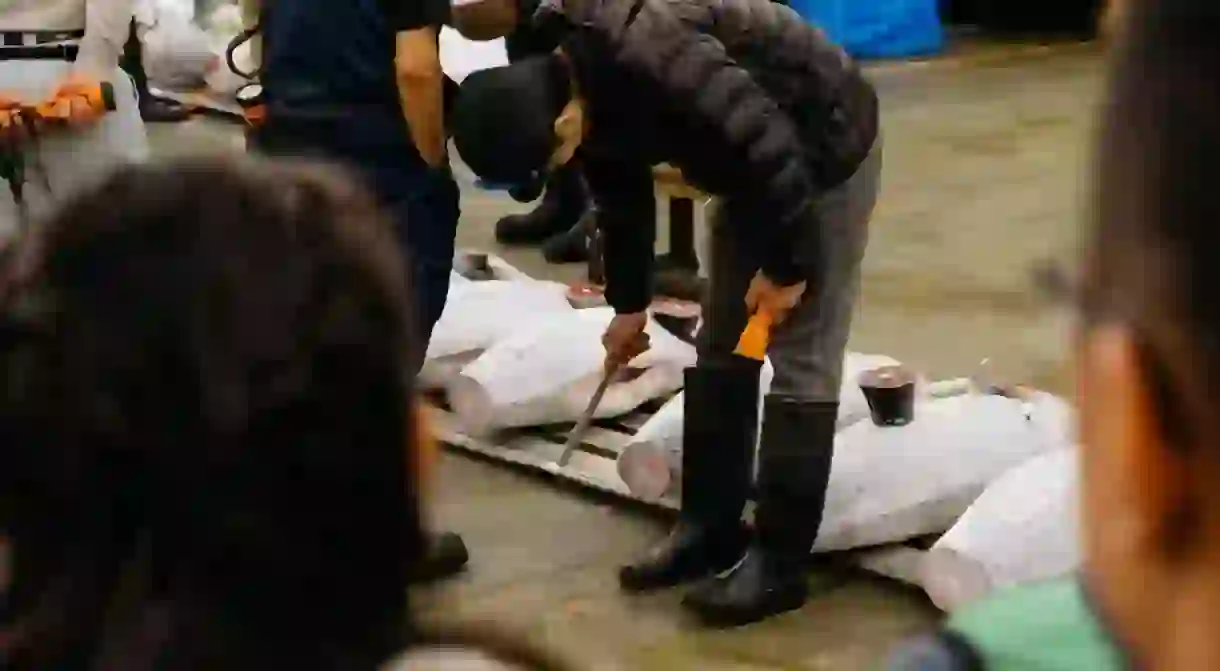Everything You Need to Know About Tsukiji Market

With news that the legendary Tsukiji Fish Market in Tokyo is about to relocate to new premises, here’s a guide to making the most of the world-famous site at its current location.

Tsukiji Fish Market has been an institution in the Japanese capital for centuries. Alongside being a thriving commercial site and tourist attraction, it’s also a vital part of Tokyo’s culinary infrastructure, handling as it does more than 700,000 metric tons of seafood every year, be it kelp or caviar. The wholesale market has long occupied its current premises in central Tokyo, close to the upmarket Ginza district, for many years now.

A number of hotels and hostels are only a stone’s throw from the market, so easy access means it’s a big draw with tourists. If you’re going to go, here’s some basic info that will make life a lot easier, along with some do’s and don’ts.


Where to find it
If you’re using the Tokyo Metro, Tsukiji Market is just above Tsukiji Shijo Station on the Oedo Subway Line. Alternatively, you can walk there in about five minutes from Tsukiji Station on the Hibiya line. The closest JR station is Shimbashi, from where you can walk to the market in about 15 minutes.

When to get there
The first of the auctions takes place at about 5am, and for attendees it’s first-come, first-served, so early starts are a necessity. There’s normally up to three auctions in the morning that allow visitors, so if you want to catch the first auction of the day, be ready to set your alarm. It’s not unheard of for visitors to get there as early as 1am in order to nab a spot.

What to do when you’re there
The inner market is a bustling industrial hub, and tourists are normally not permitted to go anywhere near it, but a small corner of the site is set aside each day for visitors to watch an auction. In order to get to the inner sanctum, you’ll need to jump through a few hoops first.

On arrival at the inner market waiting room, visitors are issued with a coloured vest and asked to get in line before they make their way to the auction hall. The wait can be tedious, more so at such an early hour, and there’s not much to do besides drink tinned coffee and chat with your fellow sightseers before one of the market staff comes to collect you, at which point the fun begins.
Important information
Tsukiji Fish Market is one of the busiest industrial hubs in the entire city, not to mention one of the most hazardous. Market staff looking after tourists are there less as a venerable guide and more as an overseer to ensure that no one goes missing or gets injured. As such, you can expect them to be a bit brisk with you.


Carlos Quiapo / © Culture Trip
The auction
After an exhilarating few minutes being led across the site, you will find yourself inside the hallowed halls of the inner market. The main event is about to begin.


Lying across the ground, lined up like bodies in the aftermath of some grisly massacre, are the carcasses of giant tuna. Surrounding them are a number of locals, decked out in overalls and wellington boots. They pace the halls slowly, inspecting the merchandise, occasionally crouching down to take a closer look. A man should appear around this time, clutching a clipboard. He’ll climb on top of a chair and the auction will commence.


It’s an incredible thing to witness first-hand, mainly thanks to the formidable vocal acrobatics of the auctioneer. Like an awards ceremony or an unfulfilling romantic encounter, the whole thing has a sustained build-up but is then over in mere moments.










Expect to be in the inner market for ten minutes at the most before being led back to the outer market (a far safer environment, unless you have an issue with pushbikes), a collection of shops and a clutch of restaurants. For anyone visiting the market, the thing to do is to go for breakfast afterwards at a nearby sushi restaurant. Needless to say, the fish will be exceedingly fresh.

















